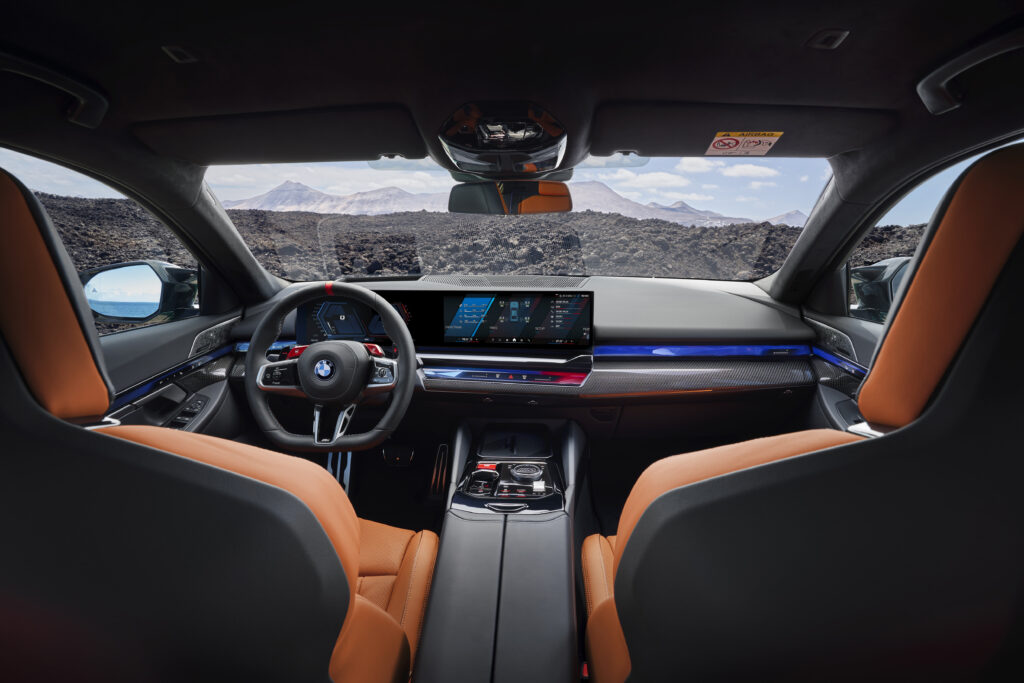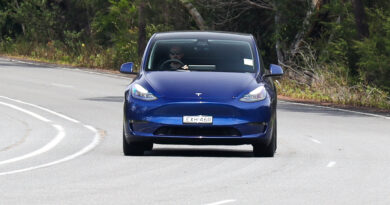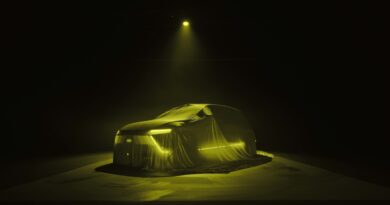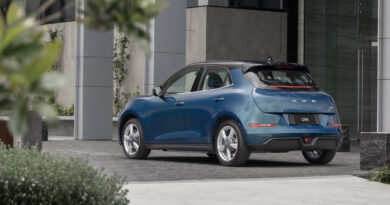Plug and play: New BMW M5 switches to wild 535kW plug-in hybrid V8 to match supercar EVs
The seventh-generation 2025 BMW M5 super sedan has cleaned up its act following the adoption of a state-of-the-art plug-in V8 powertrain that can average just 2L/100km while emitting just 39g/km of CO2.
This assumes, of course, that someone, or anyone, will drive a BMW M5 in a gentle and fuel-efficient manner. But it’s a nice claim to be able to make, and very handy in terms of emissions laws.
On sale in Q4 of this year, nobody will buy the BMW M5 for its tiny thirst but for its epic power and torque, which is enough to take on the latest Tesla Mode S plaid or Mercedes-AMG E 63. Combining a twin-turbo 4.4-litre V8 , which, on its own, produces 430kW/750Nm, with a small 145kW/280Nm electric motor installed within the eight-speed auto, total output is now an incredible 535kW and 1000Nm of torque.
That’s enough to launch the latest M5 from 0-100km/h in just 3.5 seconds and on to a top speed of 305km/h.
Thanks to an 18.6kWh (useable) lithium-ion battery, it offers supercar levels of performance plus a claimed all-electric range of 67km while travelling up to speeds of 140km/h.
Charging the battery from flat to full takes around 3.25 hours using the onboard 7.4kW AC charger, although BMW says from November that will rate will be boosted to 11kW.
Like the car it replaces, all-wheel drive remains standard for the M5, with the driver able to select three different modes – regular 4WD, rear-biased 4WD Sport or pure rear-wheel-drive mode for those who want to go drifting on track (not a Bunnings car park).
With the addition of extra hybrid gubbins, owners can now not only adjust the suspension, transmission, throttle response, and steering weight but also the brake feel and energy recuperation.
Two powertrain modes have also been added – Dynamic and Dynamic Plus. The former ensures the maximum 535kW/100Nm is delivered for as long as possible while the latter gives everything at once, but only for a short period of up to 10 minutes.
Boosting agility, the BMW M5 now adopts rear-wheel steering and runs a staggered 20-inch front and 21-inch rear wheel set-up. Tyres are also 10mm wider than before (285/40 front; 295/35 rear).
Six-piston calipers and 410mm wide front rotors and 398mm rear discs/single-piston brakes are standard, while carbon ceramic brakes with larger 420mm front discs are an option.
Sadly, there’s been a price to pay for the increased power and efficiency and that’s in the amount the all-new BMW M5 weighs.
Tipping the scales at an incredible 2435kg, the fast four-door is an astonishing 540kg heavier than the car it replaces.
At least the latest 5 Series’ larger dimensions means there’s more cabin space, especially in the rear, and there’s a long list of standard kit that includes quad-zone climate, heated and ventilated front seats, heated rear seats, a Bowers & Wilkins surround sound system, a head-up display and a carbon-fibre roof panel.

BMW has also upped the ante when it comes to the driver assist tech offered on the M5 – there’s Level 2 autonomous cruise control, 360-degree parking cameras, auto remote parking, a 14.9-inch infotainment system that runs BMW’s latest OS 8.5, which introduces gaming, video streaming, wireless Apple CarPlay and Android Auto, augmented reality satnav and natural speak voice control.
Full specification of the new plug-in BMW M5 will be released closer to its Q4 Australian debut, when it’s been tipped the German super sedan will arrive with a price tag of around $300,000.
Later on, a family friendly BMW M5 Touring wagon will also join the line-up, and that’s expected to command a premium over the sedan of around $30,000.




